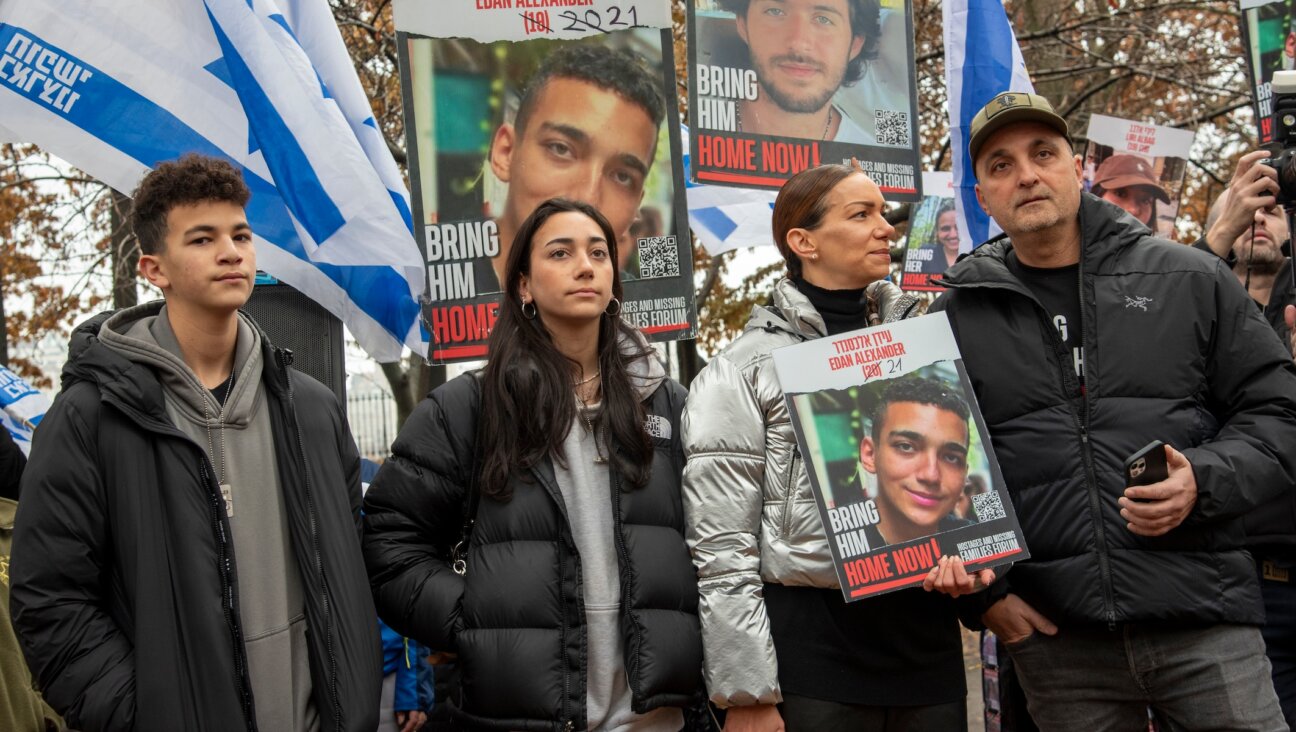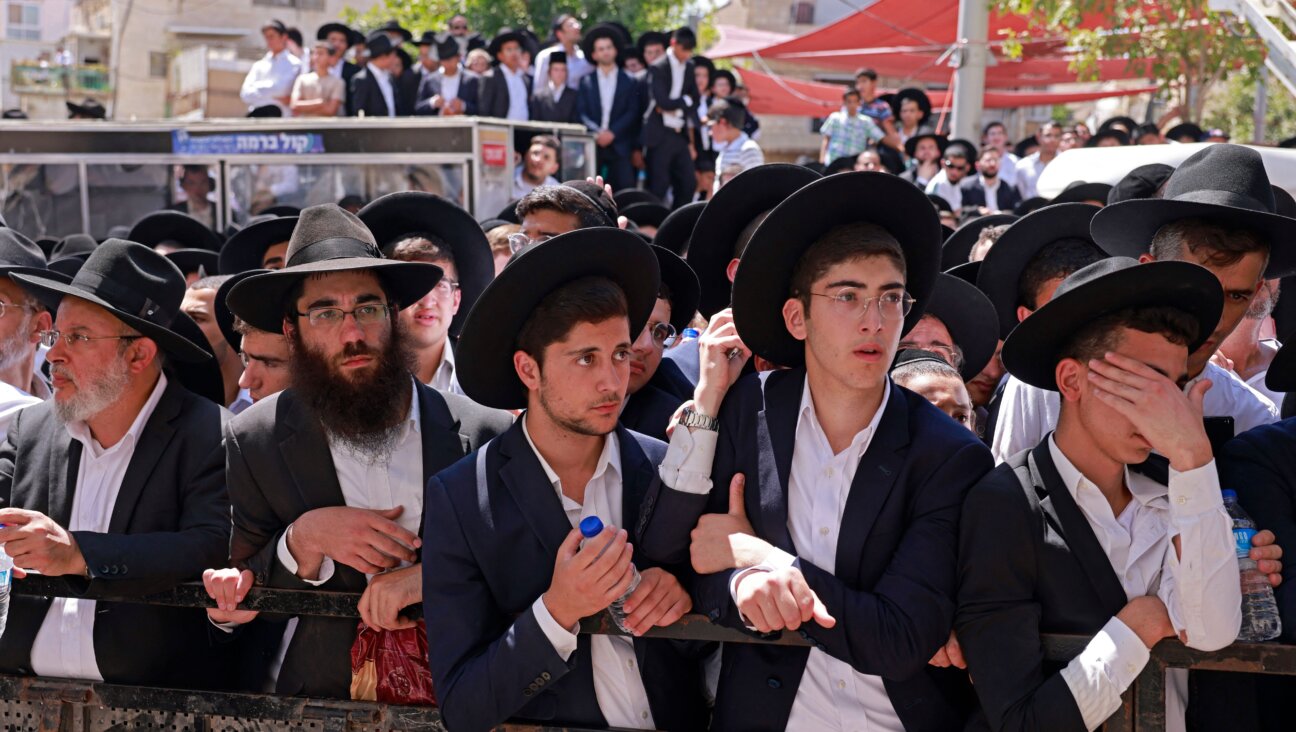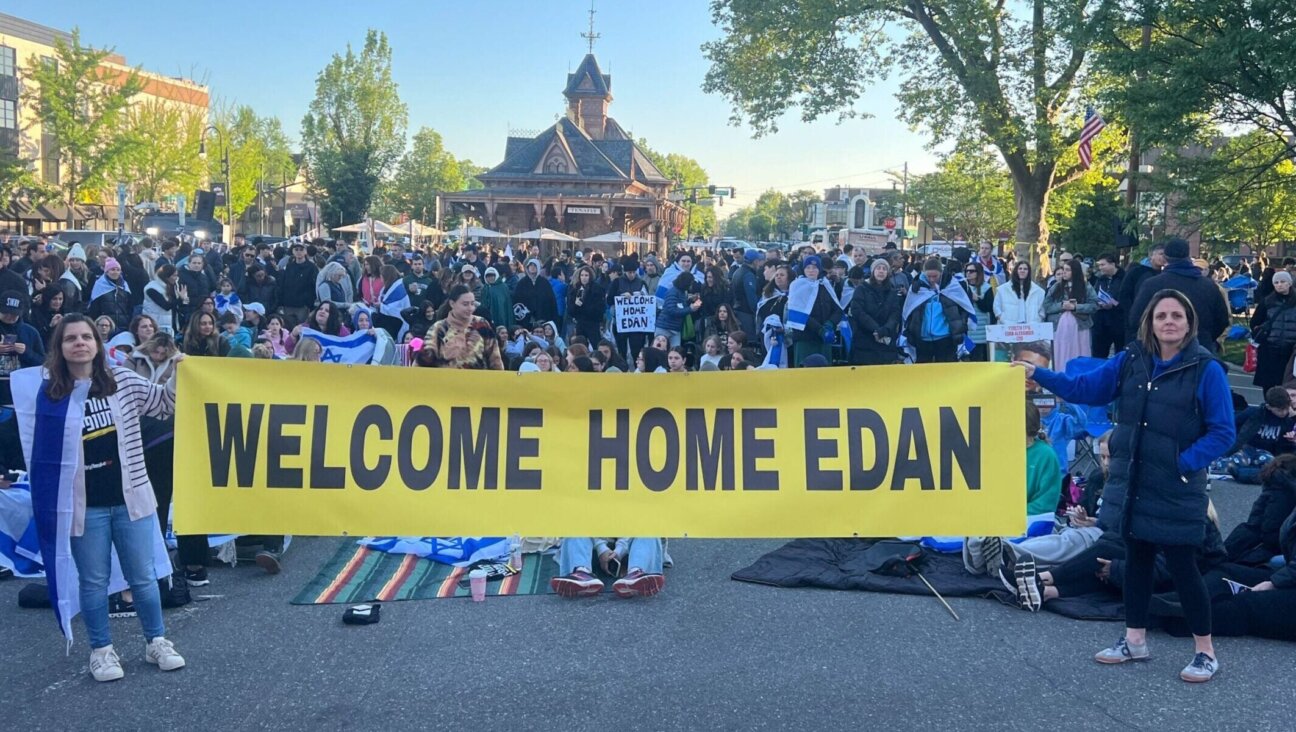Being Jewish in Berlin

Image by Wikimedia

Brandenburg Gate in Berlin Image by Lilit Marcus
For years, I skirted around Berlin. Trips to Europe took me to Denmark, Holland and France, but never to their neighbor. When a friend finally convinced me to visit this spring, I got one of two responses from all of my Jewish friends: “Oh, I love Berlin! It’s like Brooklyn. I’ve been thinking about moving.” And then there was, “Oh, I could never.”
Until now, I’ve been firmly in category two. It isn’t personal. My family was lucky enough to have already been in the United States when the Shoah happened. My beef’s with the Ukraine, who chased them out (and which I still won’t visit), not with Germany. But the Holocaust is all over every Jewish kid’s curriculum, and it’s full of German people and German words. I keep thinking of scenes from Eytan Fox’s movie “Walk On Water,” which is basically the German/Jewish conflict illustrated on an individual scale. In fact, one of the reasons I’m in Europe right now is to attend an Austrian friend and former roommate’s wedding.
But as the plane circled Tegel airport, I felt a shadow crawl into my stomach. In the Customs line, I watched an elderly German couple and thought Were they there? What did they do? I was convinced that everyone could look at me and tell, like those guys in the New York City subway who always stop and ask if you’re Jewish.
The next day, I signed up for a walking tour that went past almost every major landmark in central Berlin, from Checkpoint Charlie to the Brandenburg Gate. It was impossible not to talk about the war and Jewish people in the city. My tour guide pointed out the Neue Synagogue and gave us 10 minutes to “interact with and react to” the Memorial to the Murdered Jews of Europe, which was designed by the American Jewish architect Peter Eisenman. The memorial is made up of large gray blocks that look like coffins, although the artist who designed them refuses to give an explanation of his work. Though people are sitting on them, smoking and eating their lunches, I notice that there is no graffiti. My tour guide explains that they were all coated with a special graffiti-proof paint. About two-thirds of the way into the process, it was discovered that the company who manufactured the paint had a large ownership stake in the company that manufactured Zyklon-B. They went ahead and finished the project. Eisenman refuses to say what the piece means or represents.
Suddenly, I heard a German woman shouting at her kid — who was about to run into traffic, so she had a pretty good reason — but I yelped audibly at the sound of her angry voice using German words, even though they weren’t directed at me. Later, in the History of Berlin exhibit, the piped-in breaking glass sound effects in the Kristallnacht exhibit were so vivid and realistic than I rushed into the next exhibit as quickly as I could. (Since the museum went in chronological order, you can imagine that the next exhibit wasn’t any more cheerful.)
In Berlin, I have been hyper-aware of my Jewishness in a way that I haven’t been since I was a teenager. I grew up in Raleigh, North Carolina; there are now two synagogues, but I was the only Jewish kid in my high school and felt it acutely. Every week, my school friends went off on church retreats and Fellowship of Christian Athletes meetings, and whenever I walked past the prayer group that met in front of our school every morning I felt all my hairs begin to prickle and a giant invisible Star of David glowing on my forehead. On the block in front of my hotel, there is a tiny gold square, the size of a few postage stamps, that reads “Here lived Max Laske, Born in 1903. Murdered August 8, 1942 in Sachsenhausen.” I wonder how many times I stepped on it before I noticed.
Berlin is a city still wading through its own history. Watching giggling tourists pose and smile next to remnants of the Berlin Wall, I think about how many more of the locals walking past were alive when the wall came down than during World War II.
A few years ago, I was sitting with an Israeli friend in a Tel Aviv café. He works for an international company, and one of his German colleagues was in town for a couple of days and asked if she could join us for shakshuka. “A German, an American, and an Israeli sitting together and having tea in Israel,” my friend said. “It’s beautiful.” And here I am, alive and Jewish and wearing a pair of hamza earrings, walking alone down the streets of what used to be East Berlin. That is beautiful too, I think.
The Forward is free to read, but it isn’t free to produce

I hope you appreciated this article. Before you go, I’d like to ask you to please support the Forward.
Now more than ever, American Jews need independent news they can trust, with reporting driven by truth, not ideology. We serve you, not any ideological agenda.
At a time when other newsrooms are closing or cutting back, the Forward has removed its paywall and invested additional resources to report on the ground from Israel and around the U.S. on the impact of the war, rising antisemitism and polarized discourse.
This is a great time to support independent Jewish journalism you rely on. Make a gift today!
— Rachel Fishman Feddersen, Publisher and CEO
Support our mission to tell the Jewish story fully and fairly.
Most Popular
- 1

Fast Forward Ye debuts ‘Heil Hitler’ music video that includes a sample of a Hitler speech
- 2

Opinion It looks like Israel totally underestimated Trump
- 3

Fast Forward Student suspended for ‘F— the Jews’ video defends himself on antisemitic podcast
- 4

Culture Cardinals are Catholic, not Jewish — so why do they all wear yarmulkes?
In Case You Missed It
-

Yiddish World How Yiddish found a home In Sweden (online lecture in Yiddish)
-

Fast Forward Hamas releases Edan Alexander, last living American hostage, to Red Cross
-

Yiddish עמיל קאַלינס ראָמאַן אַנטפּלעקט שפּאַלטן אין דער ישׂראלדיקער קאָלעקטיװער נשמהEmil Kalin’s Yiddish novel exposes divisions in the Israeli collective psyche
דער העלד פֿון „צוזאַמענבראָך“ פֿאַרלאָזט זײַן פֿרוי און קינד און לאָזט זיך גיין אויף אַ קאָמפּליצירטן גײַסטיקן דרך.
-

Fast Forward In Tenafly, NJ, a crowd awaits the release of local son Edan Alexander from Hamas captivity
-
Shop the Forward Store
100% of profits support our journalism
Republish This Story
Please read before republishing
We’re happy to make this story available to republish for free, unless it originated with JTA, Haaretz or another publication (as indicated on the article) and as long as you follow our guidelines.
You must comply with the following:
- Credit the Forward
- Retain our pixel
- Preserve our canonical link in Google search
- Add a noindex tag in Google search
See our full guidelines for more information, and this guide for detail about canonical URLs.
To republish, copy the HTML by clicking on the yellow button to the right; it includes our tracking pixel, all paragraph styles and hyperlinks, the author byline and credit to the Forward. It does not include images; to avoid copyright violations, you must add them manually, following our guidelines. Please email us at [email protected], subject line “republish,” with any questions or to let us know what stories you’re picking up.















